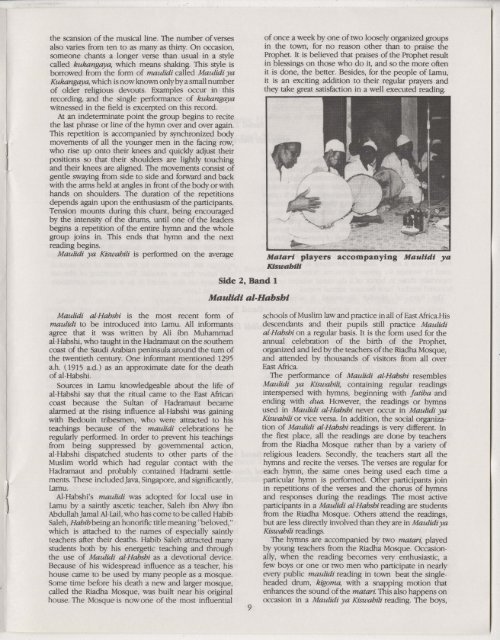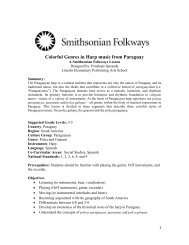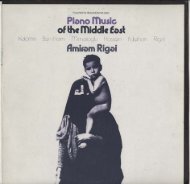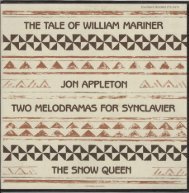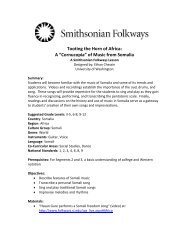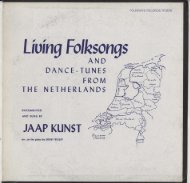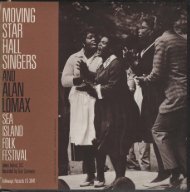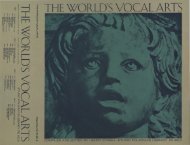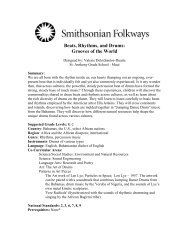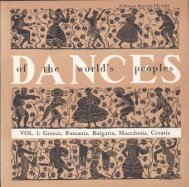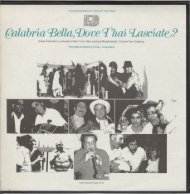The first volume in this collection contains examples<strong>of</strong> five forms <strong>of</strong> maulidi: Maulidi ya Kiswahil~ Maulidiat-Habshi, Maulidi Barazanji, Maulidi Diriji andMaulidi Sharaful Anam or Kukangaya.Maulidi is <strong>the</strong> most popular musical form in I.amu.It is first <strong>of</strong> all a Muslim ritual marking <strong>the</strong> birth <strong>of</strong><strong>the</strong> Prophet Muhammad, but it is also, both to <strong>the</strong>local participant and to <strong>the</strong> outside observer, anexciting performance. It reaches a peak <strong>of</strong> public display'during <strong>the</strong> month-long annual celebration <strong>of</strong> <strong>the</strong> actualbirth <strong>of</strong> <strong>the</strong> Prophet, but it also occurs throughout <strong>the</strong>year in private celebrations in homes or public recitalsin <strong>the</strong> mosques or on <strong>the</strong> streets <strong>of</strong> <strong>the</strong> town. The fivedifferent styles in use in I.amu all consist <strong>of</strong> chantedreadings and hymns in praise <strong>of</strong> <strong>the</strong> Prophet. In spite <strong>of</strong><strong>the</strong> strong musical component in maulidi, people referto it as "readings" ra<strong>the</strong>r than music, <strong>the</strong>reby reflecting<strong>the</strong> orthodox Muslim reluctance to be involved in <strong>the</strong>overindulgence or uncontrolled expression <strong>of</strong>tenVolume IMaulidlSide 1Maulidt ya KtswahUtassociated with musical performance.The forms <strong>of</strong> maulidi contain texts describing eventsin <strong>the</strong> life <strong>of</strong> <strong>the</strong> Prophet and maxims for proper livingderived from <strong>the</strong> Prophet's example. These are chantedby a religiOUS leader in a style similar to <strong>the</strong> chanting<strong>of</strong> <strong>the</strong> sacred Koran. Interspersed with <strong>the</strong>se readingsare <strong>the</strong> hymns in praise <strong>of</strong> <strong>the</strong> Prophet, usually sung byall in attendance. In three <strong>of</strong> <strong>the</strong> styles, <strong>the</strong> matariaccompany <strong>the</strong> hymns, while in two, <strong>the</strong> hymns aresung without instrumental accompaniment, usingbody rhythm to establish <strong>the</strong> basic pulse.The examples on this record demonstrate clearly<strong>the</strong> commonality <strong>of</strong> structure <strong>of</strong> <strong>the</strong> five styles. Thedifferences among <strong>the</strong>m should also be apparent.Different groups and individuals in I.amu have <strong>the</strong>irfavorite styles, which are used at various times andon different occasions, but nearly everyone in I.amuwould heartily agree that maulidi is undoubtedly <strong>the</strong>irmost treasured musical form.Maulidi ya Kiswahil; as it exists today, has developedout <strong>of</strong> older forms which can no longer be clearlydescribed by <strong>the</strong> people <strong>of</strong> I.amu. The readings used inMau/idi ya Kiswahili are <strong>of</strong>ten referred to as Maulidiat Debi, a form published in 1912 in Bombay, India,but no doubt composed much earlier. Knowledgeableinformants ~y that <strong>the</strong> Debi readings have been alteredby <strong>the</strong> addition <strong>of</strong> poems original to I.amu or materialfrom o<strong>the</strong>r forms <strong>of</strong> maulidi. 10 addition, Maulidi yaKiswahili is occasionally referred to as Maulidi ya Rama,<strong>the</strong> "shaking maulidi," referring to <strong>the</strong> movementsmade at <strong>the</strong> climax <strong>of</strong> <strong>the</strong> hymns. Some think Maulidiya Rama was once a distinct form <strong>of</strong> maulidi in itsown right, but most evidence indicates it is an earlierand perhaps derogatory name for what is called Maulidiya Kiswahili today.Maulidi ya Kiswahili is <strong>the</strong> only style <strong>of</strong> maulidi inI.amu in which Kiswahili is used. The language <strong>of</strong> sacredritual is Arabic, so that, even in Maulidi ya Kiswahil~<strong>the</strong> readings and many <strong>of</strong> <strong>the</strong> hymns are in Arabic.Traditionally, new songs or verses were created on <strong>the</strong>spur <strong>of</strong> <strong>the</strong> moment in <strong>the</strong> midst <strong>of</strong> heightened devotion,but this rarely happens today. Old favorites are <strong>the</strong>rule. Maulidi ya Kiswahili readings <strong>of</strong>ten occur in streetswhich have been set <strong>of</strong>f for <strong>the</strong> purpose by placingmats on <strong>the</strong> ground and enclosing <strong>the</strong> central area withropes tied to temporary poles. lights are strung between<strong>the</strong> poles and colored bits <strong>of</strong> cloth or paper are tiedto <strong>the</strong> ropes. At <strong>the</strong> height <strong>of</strong> a reading more than onehundred men and boys participate while o<strong>the</strong>rs ga<strong>the</strong>raround <strong>the</strong> perimeter.The participants sit in two long rows on <strong>the</strong> matsfacing each o<strong>the</strong>r. One row contains <strong>the</strong> readers ando<strong>the</strong>r leading religiOUS figures <strong>of</strong> ramu and <strong>the</strong> threematan players. Exact position in this row is determinedby age or respect for a person's status, especially in <strong>the</strong>religiOUS hierarchy <strong>of</strong> <strong>the</strong> town. The o<strong>the</strong>r row containsyounger men and boys who at certain points in <strong>the</strong>ritual perform stylized dances on <strong>the</strong>ir knees, swayingfrom side to side. The drums accompany <strong>the</strong> hymns8but are silent during <strong>the</strong> readings. Each drum is tunedto a particular tension or pitch and each drummerplays a different rhythmiC pattern. The three drumstoge<strong>the</strong>r create a dynamic and forceful accompanimentto <strong>the</strong> singing.A Maulidi ya Kiswahili reading begins with fatiha,opening prayers. These are followed by <strong>the</strong> openinghymn which is <strong>the</strong> same at every reading. The first eightor nine verses are chanted by a teacher and <strong>the</strong> restare sung by various individuals, with <strong>the</strong> whole groupjoining in <strong>the</strong> chorus. Ano<strong>the</strong>r reading, chanted by one<strong>of</strong> <strong>the</strong> leading teachers present follows <strong>the</strong> hymn.Readings and hymns alternate until <strong>the</strong> maqam, <strong>the</strong>verse which mentions <strong>the</strong> birth <strong>of</strong> <strong>the</strong> Prophet, isreached. At this point everyone rises and a series <strong>of</strong>hymns unique to this part <strong>of</strong> <strong>the</strong> reading is sung. After<strong>the</strong> singing <strong>of</strong> five or six <strong>of</strong> <strong>the</strong>se hymns, everyone sitsdown again, final prayers called dua are said, andrefreshments <strong>of</strong> dates and c<strong>of</strong>fee are served. The wholereading usually takes about two and a half or three hours.The readings <strong>the</strong>mselves are well known to nearlyeveryone involved since <strong>the</strong>y occur at every performance.However, <strong>the</strong> leader can choose to leave out or includeparticular sections on a given night depending on <strong>the</strong>enthusiasm <strong>of</strong> <strong>the</strong> men participating or o<strong>the</strong>r subjectivejudgments. The first two hymns are <strong>the</strong> same for everyreading, but <strong>the</strong> rest are chosen spontaneously byanyone who wishes to do so, merely by reciting <strong>the</strong>chorus <strong>of</strong> <strong>the</strong> hymn as soon as it becomes apparent<strong>the</strong> reader has finished. The timing <strong>of</strong> <strong>the</strong> entrance<strong>of</strong> <strong>the</strong> hymns is remarkable; <strong>the</strong>re is very little pausebetween readings and hymns. Direct competition <strong>of</strong>two hymns beginning at <strong>the</strong> same time is also rare.The hymns consist <strong>of</strong> a chorus which is sung byeveryone, and verses which are introduced spontaneouslyby various individuals. Most <strong>of</strong> <strong>the</strong> versesare familiar to <strong>the</strong> o<strong>the</strong>rs and many join in with <strong>the</strong>original reciter before he finishes his lines. The versesfor a given hymn vary from reading to reading and areinterchangeable from hymn to hymn, so long as <strong>the</strong>y fit
<strong>the</strong> scansion <strong>of</strong> <strong>the</strong> musical line. The number <strong>of</strong> versesalso varies from ten to as many as thirty. On occasion,someone chants a longer verse than usual in a stylecalled kukangaya, which means shaking. This style isborrowed from <strong>the</strong> form <strong>of</strong> maulidi called Maulidi yaKukangaya, which is now known only by a small number<strong>of</strong> older religious devouts. Examples occur in thisrecording, and <strong>the</strong> single performance <strong>of</strong> kukangayawitnessed in <strong>the</strong> field is excerpted on this record.At an indeterminate point <strong>the</strong> group begins to recite<strong>the</strong> last phrase or line <strong>of</strong> <strong>the</strong> hymn over and over again.This repetition is accompanied by synchronized bodymovements <strong>of</strong> all <strong>the</strong> younger men in <strong>the</strong> facing row,who rise up onto <strong>the</strong>ir knees and quickly adjust <strong>the</strong>irpositions so that <strong>the</strong>ir shoulders are lightly touchingand <strong>the</strong>ir knees are aligned. The movements consist <strong>of</strong>gentle swaying from side to side and forvvard and backwith <strong>the</strong> arms held at angles in front <strong>of</strong> <strong>the</strong> body or withhands on shoulders. The duration <strong>of</strong> <strong>the</strong> repetitionsdepends again upon <strong>the</strong> enthusiasm <strong>of</strong> <strong>the</strong> participants.Tension mounts during this chant, being encouragedby <strong>the</strong> intensity <strong>of</strong> <strong>the</strong> drums, until one <strong>of</strong> <strong>the</strong> leadersbegins a repetition <strong>of</strong> <strong>the</strong> entire hymn and <strong>the</strong> wholegroup joins in. This ends that hymn and <strong>the</strong> nextreading begins.Maulidi ya Kiswahili is performed on <strong>the</strong> averageSide 2, Band 1Maulidi al-Habshi<strong>of</strong> once a week by one <strong>of</strong> two loosely organized groupsin <strong>the</strong> town, for no reason o<strong>the</strong>r than to praise <strong>the</strong>Prophet. It is believed that praises <strong>of</strong> <strong>the</strong> Prophet resultin blessings on those who do it, and so <strong>the</strong> more <strong>of</strong>tenit is done, <strong>the</strong> better. BeSides, for <strong>the</strong> people <strong>of</strong> Iamu,it is an exciting addition to <strong>the</strong>ir regular prayers and<strong>the</strong>y take great satisfaction in a well executed reading.Malarl players accompanying Maulldl yaKlswabIUMaulidi al-Habshi is <strong>the</strong> most recent form <strong>of</strong>maulidi to be introduced into Iamu. All informantsagree that it was written by Ali ibn Muhammadal-Habshi, who taught in <strong>the</strong> Hadramaut on <strong>the</strong> sou<strong>the</strong>rncoast <strong>of</strong> <strong>the</strong> Saudi Arabian peninsula around <strong>the</strong> turn <strong>of</strong><strong>the</strong> twentieth century. One informant mentioned 1295a.h. (1915 a.d.) as an approximate date for <strong>the</strong> death<strong>of</strong> al-Habshi.Sources in Iamu knowledgeable about <strong>the</strong> life <strong>of</strong>al-Habshi say that <strong>the</strong> ritual came to <strong>the</strong> East Africancoast because <strong>the</strong> Sultan <strong>of</strong> Hadramaut becamealarmed at <strong>the</strong> rising influence al-Habshi was gainingwith Bedouin tribesmen, who were attracted to histeachings because <strong>of</strong> <strong>the</strong> maulidi celebrations heregularly performed. In order to prevent his teachingsfrom being suppressed by governmental action,al-Habshi dispatched students to o<strong>the</strong>r parts <strong>of</strong> <strong>the</strong>Muslim world which had regular contact with <strong>the</strong>Hadrarnaut and probably contained Hadrami settlements.These included Java, Singapore, and Significantly,Iamu.Al-Habshi's maulidi was adopted for local use inIamu by a saintly ascetic teacher, Saleh ibn Alwy ibnAbdullah Jamal Al-lail, who has come to be called HabibSaleh, Habib being an honorific title meaning "beloved,"which is attached to <strong>the</strong> names <strong>of</strong> especially saintlyteachers after <strong>the</strong>ir deaths. Habib Saleh attracted manystudents both by his energetic teaching and through<strong>the</strong> use <strong>of</strong> Maulidi al-Habshi as a devotional device.Because <strong>of</strong> his widespread influence as a teacher, hishouse came to be used by many people as a mosque.Some time before his death a new and larger mosque,called <strong>the</strong> Riadha Mosque, was built near his originalhouse. The Mosque-is nowone <strong>of</strong> <strong>the</strong> most influential9schools <strong>of</strong> Muslim law and practice in all <strong>of</strong> East Africa.Hisdescendants and <strong>the</strong>ir pupils still practice Maulidial-Habshi on a regular basis. It is <strong>the</strong> form used for <strong>the</strong>annual celebration <strong>of</strong> <strong>the</strong> birth <strong>of</strong> <strong>the</strong> Prophet,organized and led by <strong>the</strong> teachers <strong>of</strong> <strong>the</strong> Riadha Mosque,and attended by thousands <strong>of</strong> visitors from alloverEast Africa.The performance <strong>of</strong> Maulidi al-Habshi resemblesMaulidi ya Kiswahili, containing regular readingsinterspersed with hymns, beginning with fatiha andending with dua. However, <strong>the</strong> readings or hymnsused in Maulidi al-Habshi never occur in Maulidi yaKiswahili or vice versa. In addition, <strong>the</strong> social organization<strong>of</strong> Maulidi al-Habshi readings is very different. In<strong>the</strong> first place, all <strong>the</strong> readings are done by teachersfrom <strong>the</strong> Riadha Mosque ra<strong>the</strong>r than by a variety <strong>of</strong>religiOUS leaders. Secondly, <strong>the</strong> teachers start all <strong>the</strong>hymns and recite <strong>the</strong> verses. The verses are regular foreach hymn, <strong>the</strong> same ones being used each time aparticular hymn is performed. O<strong>the</strong>r participants joinin repetitions <strong>of</strong> <strong>the</strong> verses and <strong>the</strong> chorus <strong>of</strong> hymnsand responses during <strong>the</strong> readings. The most activeparticipants in a Maulidi al-Habshi reading are studentsfrom <strong>the</strong> Riadha Mosque. O<strong>the</strong>rs attend <strong>the</strong> readings,but are less directly involved than <strong>the</strong>y are in Maulidi yaKiswahili readings.The hymns are accompanied by two matari, playedby young teachers from <strong>the</strong> Riadha Mosque. Occasionally,when <strong>the</strong> reading becomes very enthusiastic, afew boys or one or two men who participate in nearlyevery public maulidi reading in town beat <strong>the</strong> singleheadeddrum, kigoma, with a snapping motion thatenhances <strong>the</strong> sound <strong>of</strong> <strong>the</strong> matari. This also happens onoccasion in a Maulidi ya Kiswahili reading. The boys,


